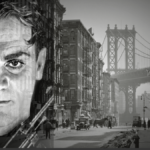In real life, though, serial killers aren’t always as inventive as those in Hollywood. They act not out of sheer cinematic force, but out of a series of behavioral characteristics that profilers recognize as the killer’s modus operandi (MO) and signature. The MO refers to what the serial killer must do to commit the crime. The MO can change to fit certain circumstances; Dennis Rader, the BTK Killer, killed most of his victims by strangulation and suffocation, but two of his victims were killed via hanging and stabbing. The signature, on the other hand, is the murderer’s personal touch.
Signatures serve the killer’s emotional and psychological needs, reflecting “a deep fantasy need that the killer has about his victims,” writes Dr. Scott Bonn at Psychology Today. Unlike the MO, signatures don’t tend to change. They emerge before the kill ever happens, like Rader’s childhood tendency to torture and kill small animals. In the list below, we’ve gathered some of the most grisly serial killer signatures from around the globe — as well as what those signatures reveal about the killers themselves.
Related: FBI’s Robert Ressler: The Psychological Profiling of Serial Killers
The Angels of Death
Location: Lainz General Hospital, Vienna, Austria
Signature: Playing God by killing patients
The Crimes: Waltraud Wagner was a nurse’s aid who enjoyed “playing God and holding the power of life and death in her hands,” Michael Newton writes in The Encyclopedia of Serial Killers. She recruited three accomplices to help her administer lethal injections to patients, officially killing 42 victims — but because Wagner and her crew were highly skilled at making the deaths look natural, their true body count could have been closer to 300.
During her trial, Wagner stated that she “[eased] the pain” of her victims. But she and her accomplices would get together for drinks after work and boast about their kills, which paints a less selfless picture of Wagner’s intentions; instead, she may have purely enjoyed the power of her role, which allowed her to push her influence over her patients, her cohorts, and the tenuous ties between life and death on the hospital floor.
Albert Fish, “The Brooklyn Vampire”
Location: New York City, New York and Washington, D.C.
Signature: Mutilating the bodies of his child victims
The Crimes: Fish is easily one of the most horrific serial killers in New York’s history; his rap sheet includes child rape, cannibalism, kidnapping, and murder. After an escalating series of kidnapping, mutilating, and murdering young children, Fish abducted and murdered 10-year-old Grace Budd in 1928. He sent Budd’s parents a letter that detailed the way he choked her to death, cut her body into small pieces, and consumed the meat over the next nine days.
Fish’s signature likely stemmed from his time in Saint John’s Orphanage in Washington, where he came to enjoy the sadistic beatings he frequently received. Furthermore, mental illness ran in Fish’s family; his mother experienced hallucinations, his uncle suffered from mania, and his siblings were diagnosed with mental afflictions — suggesting that he was already predisposed to the fantasies that would guide his criminal actions until his arrest.
Andrei Chikatilo, “The Rostov Ripper”
Location: Soviet Union
Signature: Mutilating the bodies of his young victims, including gouging out their eyes
The Crimes: Between 1978 and 1990, Chikatilo sexually assaulted, mutilated, and murdered at least 52 women and children. His first series of murders began with a 9-year-old girl named Yelena Zakotnova, whom Chikatilo choked and stabbed before throwing her body into a river. His murderous rampage featured similar signatures, including numerous knife wounds and injuries to the eye sockets.
As a child, Chikatilo was poverty-stricken and bullied. He was also chronically impotent and debilitatingly shy around women, but was able to achieve sexual arousal and orgasm through stabbing and slashing his victims. We can infer that Chikatilo’s actions may have stemmed from a need for self-actualization — or a lust for power and belonging that he couldn’t find elsewhere.
Related: Alexander Pichushkin: The Russian Chessboard Killer
Randy Kraft, “The Scorecard Killer”
Location: West Coast and Michigan, United States
Signature: Murdering men between the ages of 13 – 35, keeping a “scorecard”
The Crimes: The FBI defines Kraft a “lust killer” — someone who kills victims in order to achieve sexual satisfaction. In many of his killings, Kraft incapacitated his victims before binding, torturing, and sexually abusing them before ultimately killing them. Kraft was convicted of killing 16 victims, although he may have killed as many as 67 — he kept a logbook of cryptic references to his murders. To date, 22 victims remain unrecovered and unidentified.
During his trial, the prosecution stated, “There is nothing wrong with Mr. Kraft’s mind other than that he likes killing for sexual satisfaction.” True to form, Kraft had a reasonably average childhood and excelled in school, although he struggled with his sexuality and seemed to undergo an identity shift during his college years.
Amelia Dyer, “The Reading Baby Farmer”
Location: England, United Kingdom
Signature: Murdering illegitimate children via baby farming
The Crimes: Dyer is easily one of the most prolific serial killers in modern history. Estimates place her body count anywhere between 200 – 400 infant deaths, although she was only convicted for 6. For a fee, unwed mothers could abandon illegitimate babies to people who would foster or adopt the children; instead, Dyer would pocket the fee and murder the child by strangulation, opium overdose, or neglect, and then dump the baby’s body in the Thames.
Researchers point out that Dyer’s childhood was marked by death; two of her young sisters died, and her mother suffered from mental illness until she died of typhus in 1848. Although she was primarily motivated by financial gain, Dyer was mentally unstable and suicidal; her daughter, Polly, reportedly explained that Dyer was “sending little children to Jesus because He wanted them far more than their mothers did.”
It’s difficult to try and wrap our minds around the deep-rooted fantasies and motives that push people to kill. Some serial killers, like Albert Fish, were groomed for brutality at a young age; others, like Kraft, mystify us because of their surface-level normalcy.
Recent studies indicate that serial killings peaked in the 70s and 80s, and they have been on a steep decline since then. But for as long as serial killers exist, so too will our quest to understand the factors that brought them to murder.
Author:
A guest post on Crime Traveller from Elise Torres. Elise is a writer and independent journalist. She writes for Crimewire, a true crime blog, and her work has appeared in Bustle, Thought Catalog, and other publications. She is based in sunny San Diego.










Serial killers aren’t on a decline. We are just not catching them. In media these days , we are told every possible way killers are caught. Most have just gotten really good at picking people who won’t be missed ( passing around rumors that they’ve moved) and disposing of the bodies, not just dumping them on the side of highways.
Hi Elizabeth, I agree the media now are so open about all the details of previous crimes it certainly could provide valuable information for someone with sinister intentions looking for what to do and not to do. It’s difficult to predict just how many serial killers could be operation right now and previous figures of course are based on only those which we know about it. In America the FBI have suggested there are between 25 and 50 serial killers active at any one time and in the UK it is thought there could be at least 2 serial killers operating in the country at any one time. Frightening numbers.